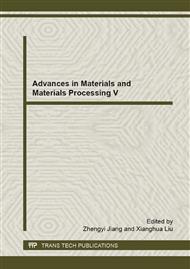p.569
p.573
p.579
p.583
p.593
p.598
p.603
p.608
p.612
A Comparison of the Complex Wettability between Locust and Moth Wing
Abstract:
The microstructure, hydrophobicity and chemical composition of the locust and moth wing surfaces were investigated by a scanning electron microscope (SEM), a contact angle meter and a Fourier transform infrared spectrometer (FT-IR). The hydrophobicity models were established on the basis of the Cassie-Baxter equation. The locust and moth wing surfaces are composed of naturally hydrophobic materials, but exhibit different complex wettability. The locust wing surface is of extremely high adhesion (sliding angle>180°) and superhydrophobicity (contact angle 151.5~157.3°), while the moth wing surface is of low adhesion (sliding angle 1~3°) and superhydrophobicity (contact angle 150.5~155.6°). The complex wettability of the wing surfaces ascribes to the cooperative effect of material element and structural element. The locust and moth wings can be potentially used as biomimetic templates for design and preparation of novel functional interface and no-loss microfluidic transport channels.
Info:
Periodical:
Pages:
593-597
Citation:
Online since:
March 2015
Keywords:
Price:
Сopyright:
© 2015 Trans Tech Publications Ltd. All Rights Reserved
Share:
Citation:


